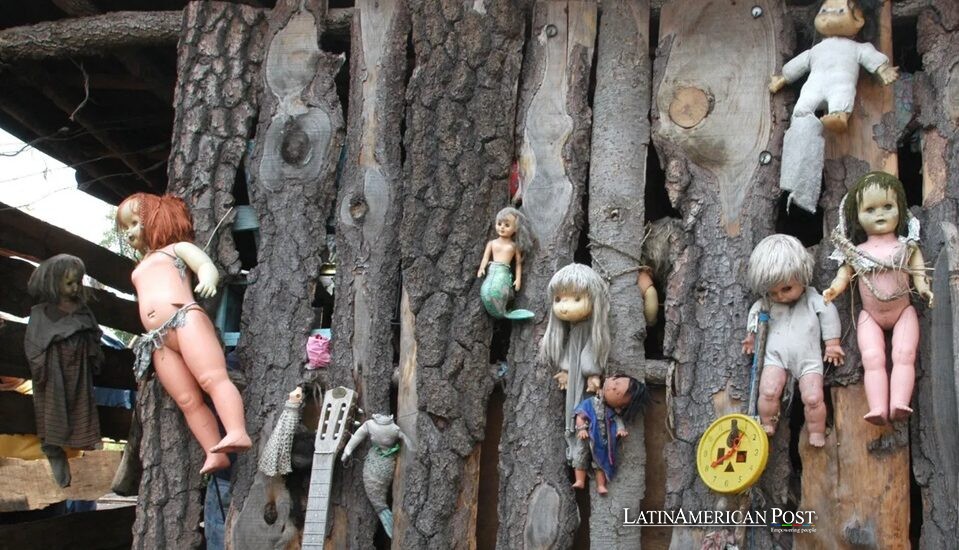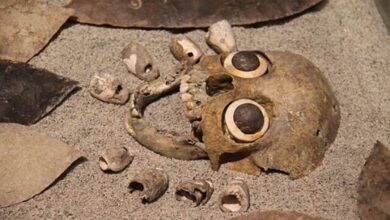Lady Gaga and Tim Burton Turn Mexico City’s Island of the Dolls into Pop Gothic Legend

Mexico City’s Xochimilco canals have always been a crossroads of myth and cinema. With The Dead Dance, Lady Gaga and Tim Burton transform the eerie Island of the Dolls into a black-and-white spectacle that blurs haunted folklore with global pop iconography.
A Gothic Pas de Deux on the Canals
The collaboration felt fated. Burton, fresh from unveiling an immersive retrospective in Mexico City, crossed paths with Gaga after her stadium shows shook the capital. Their meeting point was not a studio but a chinampa in Xochimilco, where pre-Hispanic agriculture still breathes beneath volcanic soil and volcanic legend.
On the Island of the Dolls, hundreds of weather-scarred figures dangle from trees and cabins—faces cracked, eyes missing, fabrics rotted by sun and rain. It is a shrine to dread and devotion, a setting that seems storyboarded already. Here Gaga emerges from fog, styled as a wind-up doll gone rogue, and channels a choreography that winks at Thriller while pulsing with Burton’s chiaroscuro touch.
The result is not a zombie shuffle but a ritual: a procession of the uncanny along canals edged with reeds, where the living and the dead have long shared space. The video folds seamlessly into Gaga’s Mayhem deluxe edition and a streaming saga already steeped in gothic lore, binding local myth to global narrative.
Black-and-White, Bones and Breath
Shooting in monochrome was an audacious choice in Xochimilco, where trajineras gleam in neon paints and markets overflow with marigolds and fruit. Burton drained the color to expose texture: water like ink, doll cheeks lacquered by decay, wood splintered into shadow. The decision stripped spectacle down to bone, breath, and silence.
Gaga’s contortions seem native to the island, as though she is not performing but haunting. Burton did not need CGI—the island itself supplies the surreal. Fans, already tracking Burton’s wanderings and Gaga’s return to Mexico, fanned the flames online with grainy leaks and memes. The buzz only deepened the sense that this wasn’t just a video drop but a séance transmitted globally.
It is not the first time Xochimilco has seduced the camera. From the Golden Age classic María Candelaria—lit by Gabriel Figueroa’s ethereal skies and crowned with Cannes’ Palme d’Or—to recent music documentaries, the canals have always offered filmmakers a stage where history, myth, and cinema converge. Gaga and Burton added their names to a century-long ledger.
A Location With a Century of Magnetism
What draws artists here is not only the dolls’ unsettling gaze but Xochimilco’s deeper strata. UNESCO declared the canals and chinampas a World Heritage Site in 1987, honoring the Aztec ingenuity that turned swamp into harvest through floating plots and reed fences. The Spanish grid layered on top could not erase this system; it adapted to it. That coexistence of old and new, sacred and practical, infuses every frame filmed here.
Celebrities of every genre have passed through. Pop stars toast beers on trajineras, actors post floral crowns that nod to Frida Kahlo, and directors sketch storyboards that melt into folk altars. The pattern is constant: Xochimilco enlarges the work. Artists arrive for content, and the canals supply context—a weight of myth that makes even a casual photo feel storied.
For Gaga and Burton, the Island of the Dolls was the logical extreme. Already a folk altar braided with nightmare imagery, it let them build without invention. Burton’s cabinet of curiosities met a living one, and Gaga’s performance became part of the island’s legend rather than just a spectacle filmed upon it.
Tourism, Preservation, and the Power of Myth
The aftermath will test balance. Xochimilco is already struggling with tourism, and the island’s legend risks being reduced to a spooky selfie stop. Yet when handled with care, pop culture can enrich rather than erode. The Dead Dance treats the dolls as a chorus, not mere props, letting their tactile strangeness breathe. That respect matters—it adds a new layer to the site’s mythology instead of flattening it.
It is also a reminder that Mexico City’s cultural gravity doesn’t rest solely in its historic center. The periphery—its chinampas, ruins, and haunted landmarks—carries as much magnetism as its theaters and museums. A chinampa becomes a stage, a ruin becomes a character, and a canal becomes a portal through which global pop meets ancient engineering.
In the end, The Dead Dance achieves its power not by noise but by stillness. Gaga’s fog-borne entrance, the cracked doll faces crowding her shadow, the slice of boat through black water—these images whisper rather than shout. They linger after the video ends, asking to be replayed, each viewing revealing another doll, another ripple, another secret of the canals.
Also Read: Latin America Mourns the Loss of the Dúo Dinámico Resilient Voice
The dolls stare back. The island keeps its silence. And Mexico City, always equal parts home and stage, folds another legend into its living labyrinth.





